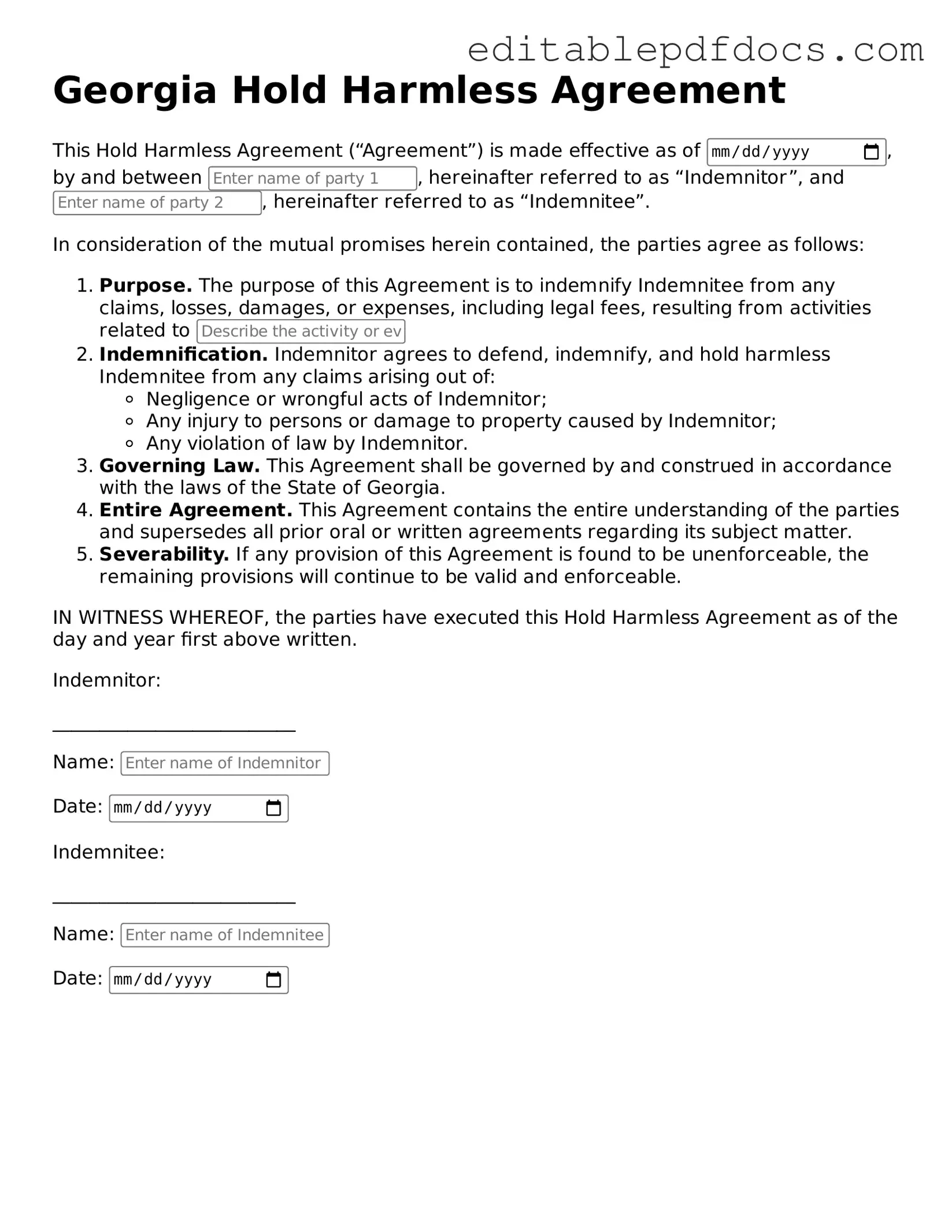Filling out the Georgia Hold Harmless Agreement form can be straightforward, but many individuals make common mistakes that can lead to complications. One frequent error is not reading the entire document before signing. Skimming through the agreement may result in overlooking important clauses that could affect liability.
Another mistake involves failing to provide accurate information. Whether it’s names, addresses, or dates, inaccuracies can invalidate the agreement. Double-checking all entries ensures that the form is filled out correctly and completely.
Many people also neglect to include all necessary parties. A Hold Harmless Agreement often requires signatures from all involved parties. Omitting a signature can create confusion about who is bound by the terms of the agreement.
Additionally, individuals sometimes misunderstand the scope of the agreement. It is crucial to grasp what liabilities are being waived. Misinterpretation can lead to unexpected legal consequences later on.
Some signers forget to date the agreement. A date is essential for establishing when the agreement takes effect. Without it, there may be disputes about the timeline of liability.
Another common error is not seeking legal advice. While the form may seem simple, consulting with a lawyer can clarify any uncertainties. This step can prevent future misunderstandings and protect one's interests.
People also often overlook the need for witnesses or notarization. Depending on the situation, these additional steps may be required to make the agreement legally binding. Ignoring these requirements can render the agreement ineffective.
Furthermore, failing to keep a copy of the signed agreement is a mistake that can lead to problems. Having a personal copy ensures that all parties can refer back to the terms if necessary.
Lastly, individuals sometimes assume that a Hold Harmless Agreement covers all potential liabilities. This assumption can be misleading. It is essential to understand that certain liabilities may still exist despite signing the agreement.
